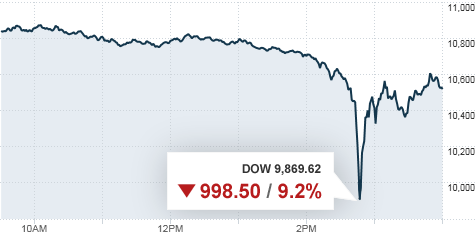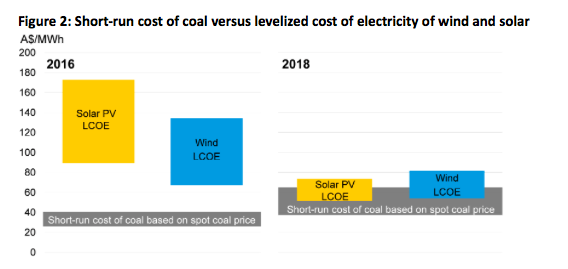Newb here. Would someone explain this ?
I'm having trouble understanding puts and calls options lingo. Are they from the perspective of the person holding the stock, or does a person e.g. either buy or sell a CALL (or PUT) ?
Let's start at the beginning: leverage.
Leverage is how much the value of your assets moves in relation to the value of an underlying asset (for example, TSLA stock). If you want to profit more, you increase your leverage, but this comes with the downside that if the stock moves down, you lose correspondingly more. Increasing leverage also comes with costs that accrue over time. Note that you can also decrease leverage which has the reverse effect.
The most straightforward way to increase leverage is to buy stock on margin. Buy twice as much stock as you put in money for it, you double your leverage. The time-costs on margin are in the form of paying interest on your borrowed shares.
Options trading is a more nuanced form of managing leverage. Owning a call option gives you the right (but not obligation) to buy 100 shares of stock from the person who sold the option, at a given price (the "strike price"), at or before a given date (the "expiration date"). Owning a put option is just the opposite - it gives you the right (but not obligation) to sell 100 shares stock to the person, at a given price (the strike price), at or before a given date.
Let's say that TSLA is at $350 and you buy a June $420 call for $2000 (note: options prices are listed per-share, not per-100 shares, so the sale price would list as "$20"). Now let's say that it's June or earlier and Tesla's stock is at $500, and you exercise the call. You can buy 100 shares of stock for $420, which you can immediately sell for $500, earning you $80 per share, or $8000. Minus the $2000 you paid for the option, you've earned $6000 on your investment - e.g. tripling your money on a $150 / 43% rise.
On the other hand, if you never get the chance to exercise the option with TSLA above $420, then you earn absolutely nothing on it, and it's $2000 down the hole.
Puts are just the opposite. Shorts buy puts with low strike prices. If they exercise below the strike price, they can force someone else to buy stock at the strike price which they're buying at the current, lower price - and thus they profit. But if they never exercise above the strike price, then the puts expire worthless.
You can as an investor also take the other side of the bet -
selling calls and puts. A bull who sells, say, a $250 PUT, thinks that the stock is going to be above $250 at expiration (and not get dramatically below $250 in the interim). A bear who sells a $420 call is making the opposite bet - that the stock won't be above $420 at expiry.
Buying calls at puts has a maximum liability as the premium you pay to purchase them. Selling puts has the maximum liability of the strike price times $100, which an be a lot (for example, sell a $250 put, the company goes bankrupt, they exercise and force you to buy 100 shares of stock at $250 which they can buy for $0, you're out $25k). Max liability on sold calls is even worse - it's effectively unlimited, since the stock can just keep going up.
Generally sellers of puts and calls
cover them, to limit their max risk. A sold put can be covered by having 100 shares of stock short, or by buying a put at a lower strike (buying one put and selling one at a different strike for the same date is known as a sold "put spread"). A sold call can be covered by having 100 shares of stock, or by buying a call at a higher strike (a sold call spread).
A common strategy is the opposite - buying call (or put) spreads. This means that you think the stock will go up (or down), but not by an unlimited amount. By selling off the less likely possibilities, you can buy spreads cheaper than you can buying pure calls or puts. A nice thing about this is that assuming the less likely possibilities don't pan out, you get to watch your obligations on the upper end decline to nothing - and indeed, if you want, repeatedly resell at lower strike prices

On the other hand, if you're wrong, and the price does zoom up past the upper end of your spreads - hey, you've made so much money on the lower ends, it probably won't bother you much. It just means that you could have made more by choosing a higher strike or not using a spread.
Terminology:
* Out of the money (OTM): The option hasn't hit its strike price yet, and still isn't that close.
* Near the money (NTM): The option is right around its strike price.
* In the money (ITM): The option has already exceeded its strike price.
Most people don't exercise options themselves. The risk/benefit reward changes over time, and so over time it's generally a different type of buyer who'd rather own a given option, with only the most short-term traders and MMs being the ones to actually execute them (word of warning: one
can execute an option well before the expiry if they want. This generally only happens for options that are way in the money). Options have a mix of intrinsic value - e.g. "I could exercise this right now and earn $X" - and time value - e.g. "the market would like to buy this option to bet on the stock price moving between now and the expiry date". Time value declines over time (this is known as
theta, and the process known as
theta decay), increasingly fast as you near expiry; like interest on margin-purchased stock, this is the penalty you pay for increasing your leverage with options. It you
sell options, theta works in the opposite direction, as the time value of the options you sold steadily declines to zero.
The other important greek letter apart from theta (although there's a bunch of them) is
delta. Delta is very simple: this is how much the value of your option will increase or decrease as the stock price rises or falls. It ranges from 0 to 1. A delta of 1 means that the value of the option goes up by $1 per share (e.g. $100 per options contract, since each contract is for 100 shares) for every dollar the stock price rises. A delta of 0,5 means that it goes up by $0,50 per share ($50 per contract) for every dollar the stock price rises, and so on. Delta is near zero for far-OTM options and near one for far- ITM options.
There's also an important parameter in the background called IV (Implied Volatility). High IV (like we have now) means that options traders expect big movements in the stock price (up or down) before the expiry period. This pushes the value of options up, often significantly. Low IV does just the opposite - it means that traders expect relatively flat stock movement, so options aren't as valuable. IV tends to rise before major news events and drop after them. Right now IV is rather high because a lot of people think Tesla could be ready to spike big over the next year (showing sustained profitability, producing from GF3, S&P inclusion, etc, plus the imminent pickup launch). This means you pay a premium for buying options, and earn a premium for selling them. IV changes can do weird things - for exampple, after Tesla Q3 deliveries missed Musk's 100k figure, the stock plunged... and while short term option values fell as well, long-term option values actually increased, due to IV rising as options traders saw even the lower 97k figure as being proof that Tesla was on the road to recovery.
Some people love options trading, and some people are terrified of it. It's a great way to balance your risk/reward ratio and fine-tune things (including for
reducing leverage - for example, by buying 1 put for every 100 shares of stock you have, you can guarantee that your investment never drops below a given level... e.g. a "protective put" hedge). But you need to understand that if you
significantly increase your leverage, your total assets can swing
wildly. Like, by orders of magnitude. If in buying stock, you're wrong about timing... well, you just sit it out, and so long as the company eventually recovers, you're fine. With options, being wrong about timing can be crushing. And note that you can be right about a given hypothesis (for example,
"Tesla will turn a profit next quarter") and still be wrong about the stock price due to macro effects, changes in outlook, unexpected departures, catastrophic events, a major investor bailing, etc. Keep this in mind if you mess with options, and be willing to accept the consequences. Increasing leverage can both make and lose fortunes.
Mod: Original post here. --ggr







